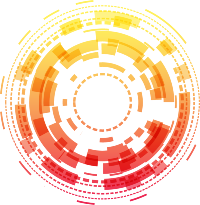Electrons are traditionally perceived as free-moving entities within metallic structures, where their behavior resembles chaotic billiard balls colliding randomly as they encounter obstacles. However, in certain specialized materials, a remarkable phenomenon occurs where electrons can maintain a coherent, directed flow. This behavior is characterized by electrons tethering themselves to the edges of the material, moving
Physics
The realm of physics continues to astonish us, unveiling new phases of matter that expand our understanding of the universe. Recently, researchers at the Cavendish Laboratory in Cambridge made a groundbreaking discovery by creating a two-dimensional version of the Bose glass. This novel phase of matter confronts fundamental principles in statistical mechanics, offering insights that
Quantum mechanics introduces us to a realm of phenomena that starkly contrasts classical physics, yielding insights that have profound implications for computation and communication. Two fundamental properties underpin virtually all quantum information applications: superposition and entanglement. These properties are not just theoretical curiosities; they form the very bedrock of quantum technologies, enabling capabilities far beyond
The realm of theoretical physics is often marked by concepts that linger in the shadows for decades before emerging into the light of empirical evidence. Such is the case with the Zel’dovich effect, a phenomenon rooted in the work of Soviet physicist Yakov Zel’dovich, who first articulated this idea in the 1970s. Centered around wave
The development of metallurgy in ancient times marked a significant leap in human civilization. The earliest blacksmiths discovered a fascinating phenomenon: by bending or hammering metals, the materials became stronger. This foundational understanding led to the practice known as work or strain hardening, a principle still integral to modern industries. From automotive fabrication to power
In a groundbreaking study spearheaded by Qimiao Si at Rice University, researchers have identified a new class of quantum critical metal that elucidates the intricate interplay of electrons within quantum materials. This research, published in the esteemed *Physical Review Letters* on September 6, delves into the profound implications of Kondo coupling and chiral spin liquids
Astrophysics has always captivated the human imagination, particularly the enigmatic entities known as neutron stars and black holes. These celestial objects are at the forefront of scientific research, providing invaluable insights into the fundamental laws of physics. Despite centuries of study, many fundamental questions about their nature and behavior persist, leaving scientists questing for deeper
Researchers at the University of Bonn, collaborating with the University of Kaiserslautern-Landau (RPTU), have ventured into an amazing domain of physics by creating a one-dimensional gas composed of photons. This innovative achievement offers a remarkable opportunity to examine theoretical predictions surrounding the transition into this extraordinary state of matter for the very first time. The
As we advance through the digital age, one limitation that continues to confront the evolution of computing technology is the inherent speed barrier faced by conventional semiconductor components. Currently, most processors operate at frequencies measured in gigahertz (GHz) — representing a staggering number of computations per second, yet it is still insufficient for the burgeoning
The quest to unravel the mysteries of the Higgs boson has never been more crucial in particle physics. The ATLAS collaboration at the Large Hadron Collider (LHC) is dedicated to comprehensively understanding how the Higgs boson interacts with fundamental particles. This understanding is foundational because it ties directly into the electroweak symmetry breaking, a pivotal
The quantum world is notoriously perplexing, stirring the intellectual curiosity of scientists while often eluding full comprehension. One of the most captivating illustrations of its oddities is Schrödinger’s cat—a thought experiment that presents a cat in a closed box that simultaneously embodies the states of life and death until it is observed. This weird duality,
In the realm of condensed matter physics, a compelling phenomenon has captured the attention of researchers: the quantum anomalous Hall effect (QAHE). This effect, characterized by the ability to conduct electrical currents without resistance along one-dimensional edges, presents a promising avenue for low-energy electronics. However, the potential of QAHE is often hindered by the presence
